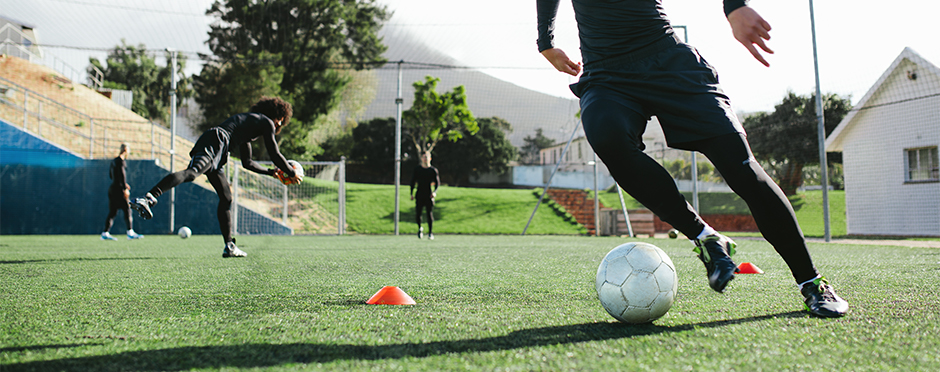
Returning To Sports After Quarantine
Leave a CommentAs we continue to navigate the current pandemic, athletes, coaches and teams alike have been closely monitoring whether or not they’ll be able to return to their sport. Many athletes may find themselves excited to return to sports but are they physically ready to jump right back in? These are some considerations for athletes, parents and coaches should they be allowed to return to sports after this break.
Depending on your sport, you may have been able to continue to practice during quarantine to some extent. On the other hand, some sports require specific equipment and adequate space to practice and train (i.e. gymnastics and swimming.) Due to these requirements, these athletes could not practice as easily during this time. Many teams and gyms provided their athletes with home workouts to maintain strength and conditioning during quarantine. However, this may not be enough for each individual athlete. Without consistent training, tissues may become weakened leading to injuries and more time away from the sport. A strategic approach will help athletes avoid injury, reduce frustration, and effectively and efficiently return the athlete back to training at their previous level.
Just 2-4 weeks off from training can lead to a state of “de-training” in terms of fitness and strength loss. There is an increased risk of acute injuries if the athlete tries to progress too quickly, as well as an increased risk of developing overuse injuries if a gradual increase in training load is not regulated. One benefit to an athlete that may have experienced some pain during their sport was forced rest time. If there were specific movements that were previously painful, athletes should return slowly to those skills to prevent further irritation or injury.
Tips for Returning to Practice
- Focus on improving fitness and flexibility in the beginning of your return
- Resume or continue rehab exercises or your injury prevention program
- Continue to build strength, endurance and timing
- Sport-specific warm-up programs help prepare the body for specific sport movements
- You may have to step back from your previous level in terms of resistance or length of practice as your body re-adjusts to your sport workout
- Learn the value of sleep as well as active recovery
- Active recovery might include using a foam roller or stick roller on sore or tight muscles or performing a cool down routine
- Your sleep schedule may have changed during this time but generally kids between 13-18 years old need 8-10 hours of sleep each night. Make sure you are going to bed at an adequate time to wake up prior to practice the next day
- Make sure you are giving your body the proper fuel- both nutrition and water- to support your training schedule
Mental Health
It is normal to feel anxiety, frustration, or stress with a return to practice. Not everyone will feel the same during this time or respond the same. Make sure you speak up to your teammates, your parents and your coaches about how you’re feeling mentally and physically. Your body may feel different during this time after a break from practice. Make sure you set goals for yourself that are realistic, stay positive and have patience, you’ll be back in the swing of things in no time!
If you’re experiencing pain when returning to your sport, reach out to an Athletico clinician to have your pain or injury assessed for free. Assessments are available both in-clinic and virtually through our Telehealth platform.
The Athletico blog is an educational resource written by Athletico employees. Athletico bloggers are licensed professionals who abide by the code of ethics outlined by their respective professional associations. The content published in blog posts represents the opinion of the individual author based on their expertise and experience. The content provided in this blog is for informational purposes only, does not constitute medical advice and should not be relied on for making personal health decisions.
